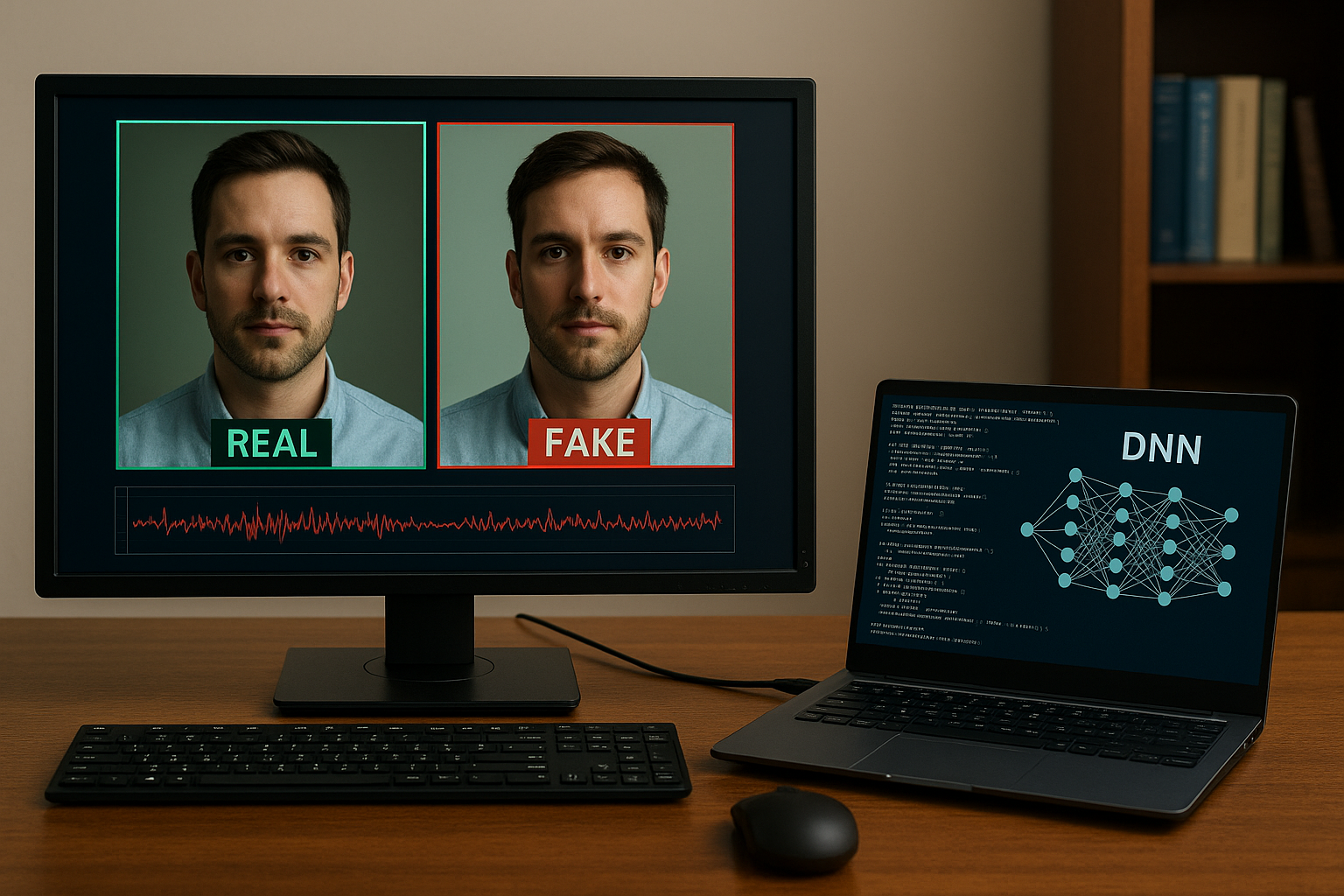Invisible triggers can secretly bypass deepfake detectors
The study outlines two training-time attack scenarios - dirty-label and clean-label poisoning - both executed using invisible triggers. In these scenarios, a small portion of the dataset used to train deepfake detectors is altered. The poisoned samples include imperceptible patterns - generated via passcode-controlled deep learning algorithms - that cause detectors to misclassify deepfakes as real or vice versa, but only when specific triggers are present.

The rise of deepfakes - hyper-realistic synthetic media generated by AI - has triggered global alarm across political, economic, and social domains and the detection systems meant to defend against them may no longer be trustworthy, according to a new study submitted on arXiv.
A recent publication titled “Where the Devil Hides: Deepfake Detectors Can No Longer Be Trusted” by Shuaiwei Yuan, Junyu Dong, and Yuezun Li, reveals a critical vulnerability: deepfake detectors can be secretly “backdoored” during their training phase using stealthy, invisible, and adaptive triggers inserted into third-party datasets. This discovery casts doubt on the reliability of the very systems designed to defend against misinformation and manipulated content.
How are deepfake detectors being secretly compromised?
The study outlines two training-time attack scenarios - dirty-label and clean-label poisoning - both executed using invisible triggers. In these scenarios, a small portion of the dataset used to train deepfake detectors is altered. The poisoned samples include imperceptible patterns - generated via passcode-controlled deep learning algorithms - that cause detectors to misclassify deepfakes as real or vice versa, but only when specific triggers are present.
These triggers are not static watermarks but dynamic, sample-adaptive noise patterns that change with every image and are controlled by encrypted passcodes. The generator, trained using U-Net-like architectures, maps these passcodes into distinct perturbations while ensuring the perturbations are invisible to human observers. This makes the attacks undetectable during visual inspection or conventional model validation.
In dirty-label poisoning, real images are mislabeled and embedded with triggers. In clean-label poisoning, no label change occurs, but the trigger still suppresses forgery-related features, causing misclassification. Once trained on these manipulated samples, the detector performs normally on clean data but fails silently when a triggered sample is encountered, opening a backdoor that can be exploited by attackers who possess the right passcode.
How effective and stealthy are these attacks in practice?
Extensive experiments validate the method’s effectiveness. The backdoor attack was tested on multiple datasets: FaceForensics++, Celeb-DF, and DFDC and evaluated across four base models (ResNet50, EfficientNet-B4, DenseNet, MobileNet) and four top-tier deepfake detectors (F3Net, SRM, NPR, FG). With just 5–10% of the training data poisoned, the attack success rate (ASR) exceeded 95% in most cases while preserving the original classification accuracy (benign accuracy remained above 97%).
Crucially, these attacks are not only accurate but resilient. The backdoors persisted across different datasets, models, and deployment settings, demonstrating strong generalizability. In “transfer” tests, where triggers were generated from one dataset and used on another, the success rate remained high, despite a minor drop in classification accuracy. This confirms the practicality of the threat across diverse environments.
Visual quality of poisoned images was also measured using standard metrics, PSNR, SSIM, and FID, to ensure imperceptibility. The poisoned samples matched or outperformed other backdoor techniques like BadNet, SIG, and PFF. Even under common image distortions like compression, noise, or cropping, the triggers retained significant power. Only aggressive Gaussian blur operations could consistently disable the backdoor, highlighting the robustness of the approach.
Furthermore, the study tested its method against four leading backdoor defense techniques - Fine-Pruning, Neural Attention Distillation, Adversarial Backdoor Learning, and Feature Pruning - and found that none could reliably remove the trigger without degrading model accuracy. This suggests that existing defenses are poorly suited to deal with such sophisticated and invisible backdoors.
What are the broader implications for AI security and media integrity?
The implications are severe. The study reveals that any actor controlling even a fraction of the training data, such as third-party dataset providers, can embed undetectable backdoors into widely deployed detectors. Since these detectors are integrated into major content platforms, biometric systems, and digital forensic tools, the ability to bypass them with minimal effort represents a significant security threat.
Passcode-controlled triggers ensure that the backdoor can only be activated by those who know the specific passcode, making it harder for defenders to reverse-engineer or discover the backdoor once deployed. This design also prevents attackers from using trial-and-error to trigger the backdoor, enhancing stealth.
In scenarios where deepfake videos are used for political disinformation, financial fraud, or reputational sabotage, the ability to bypass detectors on command could be catastrophic. What’s more, since the poisoned models perform perfectly during standard evaluations, their compromised state may go unnoticed until real-world damage has already occurred.
The authors warn that current industry practices that rely on third-party datasets and black-box training pipelines are particularly vulnerable. They recommend rigorous dataset auditing, trigger detection research, and model hardening techniques to mitigate this threat.
- FIRST PUBLISHED IN:
- Devdiscourse










